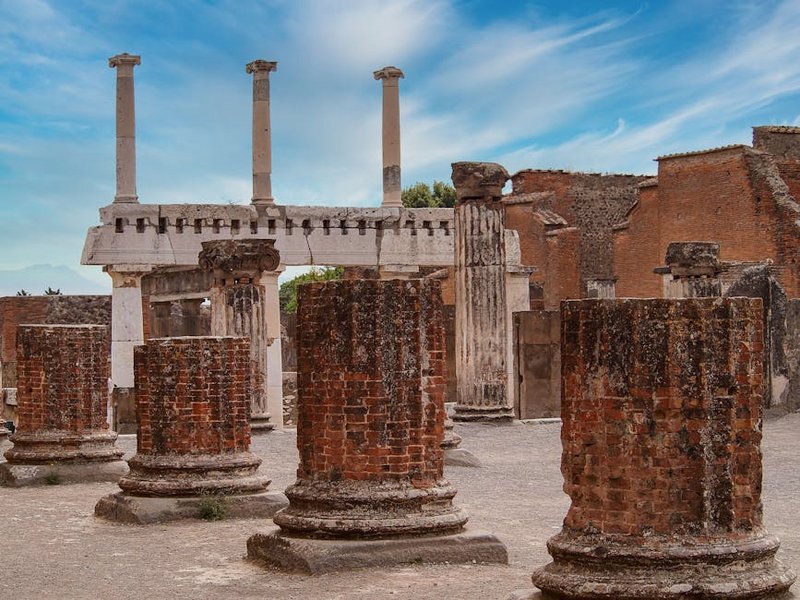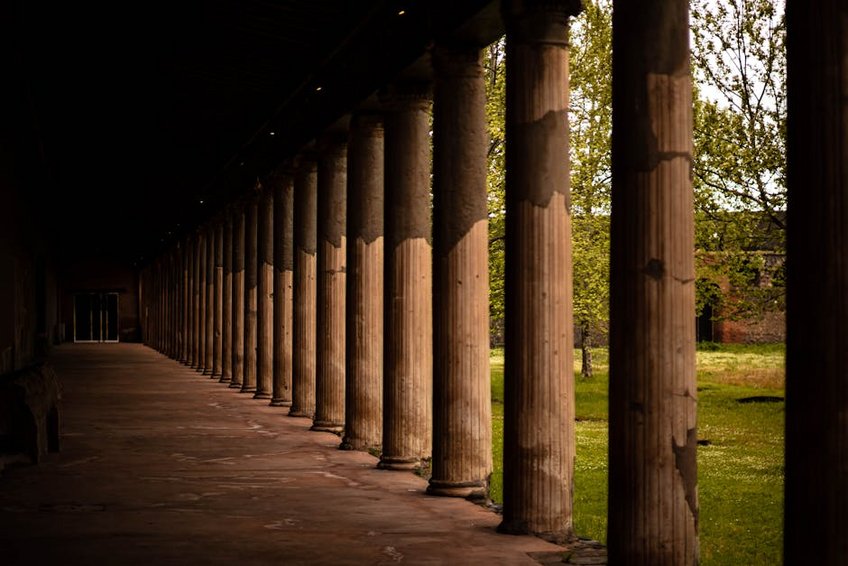Naples Pompeii Ancient City: Uncover the Secrets of a Frozen Civilization
Stepping into the Naples Pompeii Ancient City is like opening a history book where the pages are made of stone and the ink is volcanic ash. This UNESCO World Heritage site offers one of the most profound and moving travel experiences you can have, providing an almost miraculous window into daily life during the Roman Empire, frozen in time by the catastrophic eruption of Mount Vesuvius in 79 AD. Walking these ancient streets, you’ll see bakeries with petrified loaves of bread, homes with beautifully preserved frescoes, and even the haunting plaster casts of victims caught in their final moments. The scale of preservation is unparalleled anywhere else in the world, making Pompeii not just an archaeological site but a deeply human connection to the past. For history enthusiasts, culture lovers, or anyone seeking a truly unforgettable journey, exploring the Naples Pompeii Ancient City should be at the very top of your Italian travel itinerary.
Naples Pompeii Ancient City – Essential Historical Background
Understanding the historical context of the Naples Pompeii Ancient City dramatically enriches your visit. Founded in the 6th or 7th century BC by the Oscans, Pompeii later came under Greek and Samnite influence before becoming a thriving Roman colony in 80 BC. Its strategic location near the Bay of Naples and the fertile Sarno River valley made it a prosperous commercial hub. The city was a vibrant center of trade, agriculture, and leisure, home to an estimated 11,000 to 15,000 people at the time of its destruction. The eruption of Vesuvius, which also buried the nearby towns of Herculaneum, Stabiae, and Oplontis, was a cataclysmic event that paradoxically became history’s greatest act of preservation. The layers of ash and pumice encased the city, protecting it from looters and the elements for nearly 1,700 years until systematic excavations began in the 18th century.
Key Historical Timeline – What You Need to Know
- Founding & Early History (c. 6th-7th Century BC): Originally settled by the Oscan peoples of central Italy, the site shows evidence of early Greek and Etruscan cultural influence due to its prime location on trade routes.
- Roman Rule (from 80 BC): After being conquered by the Roman general Lucius Cornelius Sulla, Pompeii was officially established as a Roman colony named Colonia Cornelia Veneria Pompeianorum, rapidly adopting Roman law, architecture, and customs.
- The Great Earthquake (62 AD): A massive earthquake severely damaged much of the city and its infrastructure. Many buildings were still under repair 17 years later when Vesuvius erupted, a fact evident in the archaeological record.
- The Eruption (79 AD): Over two days in late October (recent evidence suggests it may have been autumn, not August), Mount Vesuvius cataclysmically erupted, burying Pompeii under 4 to 6 meters (13 to 20 feet) of volcanic ash and pumice.
- Budget Traveler (Approx. $50-70 USD per person): This covers a standard entry ticket (around $18 USD), a packed lunch and water, and a regional train ticket from Naples (Circumvesuviana line, approx. $3.50 USD each way). Opt for a free audio guide app on your phone instead of a paid tour.
- Mid-Range Experience (Approx. $90-130 USD per person): Includes a skip-the-line ticket ($18), an official 2-hour guided tour ($15-20), lunch at a casual restaurant outside the site ($25), round-trip train transport ($7), and a guidebook or map ($10).
- Comfort & Convenience (Approx. $200+ USD per person): Entails a private guided tour for a more personalized experience ($50-100), private transfer from Naples or Sorrento ($60+), a premium combo ticket that includes Herculaneum or other sites ($25), and a nice sit-down dinner afterwards ($50).
- Official Pompeii Archaeological Park Website
- UNESCO World Heritage Centre – Archaeological Areas of Pompei
The Rediscovery and Excavation – Key Details
The story of Pompeii’s rediscovery is almost as fascinating as its destruction. The lost city was accidentally found in 1748 by Spanish military engineer Rocque Joaquin de Alcubierre, who was digging an aqueduct for the King of Naples. Early excavations were haphazard and focused on retrieving valuable art and artifacts for private collections. It wasn’t until 1863, under the direction of archaeologist Giuseppe Fiorelli, that a more scientific approach was adopted. Fiorelli pioneered the technique of injecting plaster into the voids left by decomposed organic matter—bodies, wood, and furniture—revealing the haunting shapes of the volcano’s victims and the stunning details of everyday objects. Modern excavations and conservation efforts, now using advanced technologies like 3D laser scanning and digital mapping, continue to reveal new secrets and face the constant challenge of preserving this fragile site for future generations.

Naples Pompeii Ancient City – Planning Your Visit
Planning is absolutely crucial for making the most of your trip to the Naples Pompeii Ancient City. The archaeological park spans a vast 170 acres, and exploring it involves a significant amount of walking on uneven, ancient stone paths under the often intense Italian sun. You should realistically allocate a full day to see the major highlights without feeling rushed. Start your day early to beat the largest crowds and the midday heat. Comfort is key: wear sturdy, broken-in walking shoes, a sun hat, and breathable clothing, and carry a reusable water bottle—there are water fountains (fontanelle) throughout the site to refill. Purchasing your tickets online in advance is highly recommended to skip the long ticket lines, especially during peak season from April to October. Consider your travel companions; while fascinating for older children and teens, the extensive walking and historical nature of the site may be challenging for very young kids.
Best Time to Visit Naples Pompeii Ancient City
The ideal time to explore the Naples Pompeii Ancient City is during the shoulder seasons of spring (April to early June) and autumn (late September to October). During these months, you’ll enjoy milder temperatures, making hours of walking outdoors much more pleasant, and generally encounter smaller crowds than in the scorching peak summer. Summer (July and August) can be exceptionally hot and crowded, with temperatures often soaring above 30°C (86°F) and queue times stretching over an hour. Winter (November to February) offers the advantage of fewest visitors and lower prices, but be prepared for shorter daylight hours and the possibility of rain. The site is open year-round, typically from 9:00 AM to 7:00 PM in summer (with last entry at 5:30 PM) and 9:00 AM to 5:00 PM in winter (with last entry at 3:30 PM), but always check the official website for the most current hours before your visit.
Budget Planning and Costs for Your Trip
Essential Preparation Checklist
To ensure a smooth and enjoyable visit, a little preparation goes a long way. First, secure your entrance tickets online from the official Pompeii Sites website to guarantee entry and avoid wasting vacation time in long queues. Download a reliable map or audio guide app onto your phone beforehand, as on-site Wi-Fi can be unreliable. Physically prepare for a demanding day: break in comfortable walking shoes, pack a day bag with sunscreen, a hat, sunglasses, and a refillable water bottle. Bring a portable power bank to keep your phone charged for photos and your digital guide. While not mandatory, reading a book or watching a documentary about Pompeii before you go will immensely deepen your appreciation for the incredible details you’ll witness, transforming ruins into stories.
Naples Pompeii Ancient City – Top Attractions and Must-See Sights
With so much ground to cover, it’s helpful to prioritize the absolute must-see attractions within the Naples Pompeii Ancient City to make the most of your time. The site is organized into regions (Regiones) and blocks (Insulae), and having a plan will prevent you from missing its greatest treasures. The Forum was the heart of public life, surrounded by important religious, commercial, and political buildings. The Stabian Baths are among the oldest and best-preserved Roman baths, offering incredible insight into Roman hygiene and social customs. Don’t miss the numerous villas, like the House of the Vettii or the Villa of the Mysteries, which showcase breathtaking frescoes and mosaics that have retained their vibrant colors for two millennia. The Lupanar (brothel) provides a frank look at another aspect of Roman society, with its explicit wall paintings and stone beds. Finally, the Garden of the Fugitives offers a somber and powerful moment, displaying plaster casts of victims who perished together.
Must-See Highlights of the Ruins
Your first stop should be the Forum (Foro), the sprawling main public square that was the center of Pompeii’s civic, commercial, and religious life. Flanked by the ruins of temples to Apollo and Jupiter, the Basilica (law courts), and the Macellum (market), it offers a grand sense of the city’s scale. From there, head to the Amphitheatre, one of the oldest surviving Roman amphitheaters built in stone, capable of holding 20,000 spectators for gladiatorial games. The Teatro Grande (Large Theatre) is another architectural marvel with excellent acoustics, still used for performances today. For a glimpse into domestic life, the House of the Faun is one of the largest and most impressive private residences, named after the famous bronze statue of a dancing faun found in its impluvium. Its exquisite mosaics, including a massive depiction of Alexander the Great battling Darius III, are stunning.
Hidden Gems and Lesser-Known Spots
While the main attractions are essential, venturing off the beaten path within the Naples Pompeii Ancient City reveals equally fascinating stories. Seek out the Fullonica of Stephanus, a well-preserved laundry and dyeing workshop that illustrates the industrial side of Roman life. The Bakery of Modestus, with its recognizable stone mills and petrified loaves of bread found in the oven, provides a poignant and tangible connection to the disaster. For art lovers, the House of the Golden Cupids is a quieter villa filled with beautiful artwork and an exquisite mosaic floor. Another powerful yet often-missed site is the Gladiator Barracks (Caserma dei Gladiatori), where the remains of gladiators were found chained, unable to escape the eruption. These spots are often less crowded, allowing for a more contemplative experience away from the main tourist thoroughfares.
Naples Pompeii Ancient City – Practical Travel and Logistics
Navigating the logistics of your visit to the Naples Pompeii Ancient City is straightforward but requires some key information. The archaeological park has three main entrances: Porta Marina (the most popular and closest to the Circumvesuviana train station), Piazza Esedra, and Piazza Anfiteatro. Each leads to different parts of the ruins, so check your map to decide which is best for your planned route. Facilities inside are limited; there are restrooms near the entrances and a cafe, but options for food and drink are expensive and basic—packing snacks is advised. The terrain is challenging: ancient, uneven cobblestone streets, steps without handrails, and minimal shade. This makes the site largely inaccessible for those with significant mobility issues; however, a suggested accessible route is available on the official website. Allow a minimum of 3-4 hours to see the highlights, but a full 6-7 hours is ideal for a more comprehensive exploration.
| Category | Options/Features | Price Range (USD) |
|---|---|---|
| Entrance Tickets | Pompeii Only (Standard), 3-Site Pass (Pompeii, Herculaneum, Oplontis), Free EU Under-18 | $18 – $25 |
| Guided Tours | Official 2-Hr Group Tour, Private Guide (2-3 Hrs), Audio Guide Rental | $15 – $150 |
| Transport from Naples | Circumvesuviana Train, Campania Express Train, EAV Bus, Taxi/Private Driver | $3.50 – $60+ |
| Nearby Accommodation | B&B in Modern Pompeii, 3-Star Hotel, 4/5-Star Hotel in Naples or Sorrento | $80 – $300+/night |


